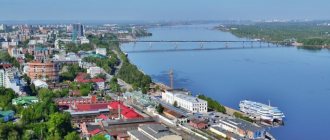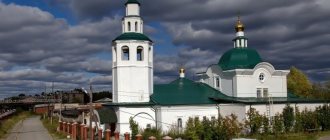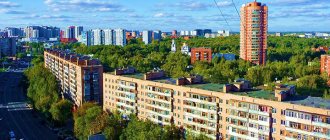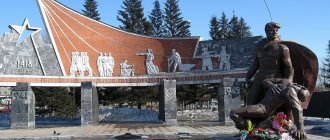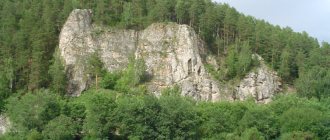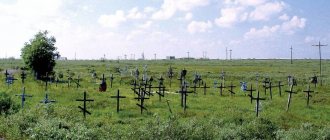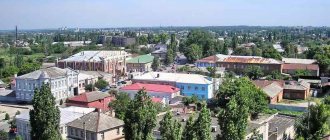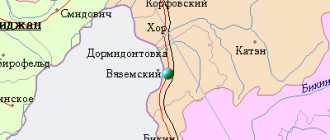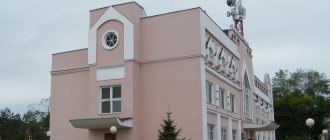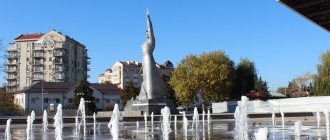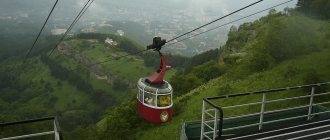The Perm region today is an administrative-territorial division that includes 25 cities, 26 urban-type settlements (urban-type settlements) and also smaller villages, the total population of which is 2,599,260 people. At the same time, the Perm region includes a territory with a total area of 160,237 km2. Thus, the population density here today is 16.22 people / square kilometer.
But the specificity of the distribution of residents here is such that citizens predominantly populate urban areas and urban settlements, but in villages, hamlets and towns the number of residents is insignificant. If we consider these data in percentage terms, then the urban population in the Perm Territory accounts for almost 76%, which indicates an uneven distribution of people throughout the region.
Current data
Today, 2,599,260 people live in the Perm Territory. Thus, in terms of population, this region occupies 17th position among other regions and republics. Moreover, over the past few years there has been a tendency towards a decrease in the number of residents in this region.
If we talk directly about the percentage of the total number of residents of the Russian Federation, then this figure is 1.77%.
This region is distinguished by the following features:
- The climate here is moderate.
- Most of the area is located on the plain - about 85%, the rest is mountain formations.
- There are about 40 rivers here, most of which are small in terms of water flow. The main ones include Kama, Vishera, Chusovaya.
- The flora is represented mainly by forests.
- The economy is one of the most developed in Russia due to a highly developed industrial complex. It includes the oil industry, chemical industry, heavy engineering, metallurgy (non-ferrous and ferrous), as well as logging.
- From the point of view of the development of science, there are currently about 30 universities and other special educational organizations operating here.
Climate of Berezniki
The Russian north near the Ural Mountains is not the most weather-friendly place. Winter frosts down to -30 °C are not uncommon; snow lasts from October to April.
The climate is moderate continental, characterized by long, rather harsh winters and short, cool summers. The average temperature for the year is 0.9 °C, the average temperature in July (the warmest month) is 17 °C, in January (the coldest) - -14 °C.
Statistics by year
If we consider how the population of the Perm Territory has changed, here are the figures given by Rosstat of the Russian Federation:
- In 1939 - 2,087,518 people.
- In 1959 – 2,992,876.
- In 1970 – 3,023,443.
- In 1987, the population stopped arriving at the same rate as before, so the number of people during this period, even for a number of objective reasons, decreased and amounted to only 3,011,540 citizens.
- By 1990, the number of people living in this territory was 3,027,958.
- By 1996, the recession continued to accelerate, leading to even greater declines. The number of people here has dropped to 2,943,491.
- And this trend continued until 2012. By this period, the number of people in the region was 2,631,073.
- From that moment on, the dynamics changed somewhat in a positive direction. And, although the increase did not increase too quickly, it was still present. Therefore, by 2015, 2,637,032 began to live here.
- But this is where the growth stopped, since until 2022 the trend toward population decline resumed again. For the current calendar period, the number of Russians populating this territory is 2,599,260 people.
Famous personalities
In his youth, Boris Yeltsin lived in Berezniki, whose father worked at Khimstroi - first as a foreman, and later as the head of the construction department (by the way, teachers testified that the future first president of Russia had problems with discipline, despite good grades).
Other famous Berezniki residents:
- director Stanislav Govorukhin;
- actor Georgy Burkov (he served in the local theater);
- poet and writer Alexey Reshetov, whose monument was mentioned above;
- Sambo champion Svetlana Burtseva;
- hockey players Sergei Zemchenok and Mikhail Mikhailov;
- swimming champion Vladimir Selkov;
- ballet dancer Sergei Tsvetkov;
- composer Vladimir Kobekin.
Berezniki has given the country many outstanding athletes (in particular, those currently performing in the international sports arena) and several medical dynasties. Most of the local politicians are also natives of the Perm region.
Cities
If we consider the population in the Perm Territory not in general, but specifically by settlements, by main cities, then here is the data provided by Rosstat for the period 2022:
- Perm - 1,059,934 people.
- Berezniki – 141.276.
- Usolye city – 6368.
- Gornozavodsk - 11274.
- Kungur city – 65.824.
- Tchaikovsky urban district - 104.306.
- The population of the city of Kudymkar is 30,904.
- Vereshchagino – 21.648.
- Kiesel - 14.162.
- Dobryanka – 32.304.
- City of Chusovoy – 44.185.
- Kudymkar – 30.904.
- Gubakha – 19.472.
- Krasnovishersk – 15.023.
- Chernushka – 32.954.
- Chusovoy municipal district has a population of 66,381, while the city itself is 44,185.
- Oktyabrsky Municipal District - 27.139.
- Wasp – 20.899.
Data for 2010
Reviews from residents and tourists
Galina, Gubakha
I don’t want to impose my opinion on anyone, but I’m one of those who didn’t like the Wagner monument. Indeed, the man who did so much for the entire Perm region could have been portrayed more representatively. And at the monument there was some cheerful fat man, you can see it even in the photo.
Ivan Anatolyevich, pos. Eagle
I wonder if there is some place to look down on the panorama of the city? The description of the failures is intriguing. I have been to Berezniki many times and heard a lot about them, but for some reason I paid almost no attention.
Igor, Kudymkar
I lived in Berezniki until the 2000s, this is my youth! There is a tree in the park that my father climbed as a child. A lot has changed now, but I still feel nostalgic when I come there. And I advise all Perm residents to go at least once, preferably in the summer.
Natural movement
Considering migration flows and population growth in the region, it is worth noting the following stages. Peak growth rates occurred in the following periods (number of people arriving per 1,000 population):
- 1975 – 7.4 people.
- 2001 – 6 people.
- 2004 – 6.3 people.
- If we talk about natural loss, here is when it was maximum:
- In 2000, for every thousand people, 6 citizens traveled to other cities or outside the country.
- In 2005, this figure was 7 people.
It is worth noting that the fluctuation figures have now decreased significantly. Deviations in both directions, both increasing and decreasing, became less significant. But still, the general trend is downward, which is due to a number of internal processes at the level of the entire country.
This can include a not very satisfactory level of medical care, small opportunities in terms of earning money and developing your own business. As well as a number of other factors that local residents assess as not very satisfactory, due to which negative population growth is formed, that is, in fact, a steady decline, although not having a global scale.
Population size and composition
In 1937, it was planned that from a population of 110,000 people, the population of Berezniki would grow to 250,000 by 1947, but the Great Patriotic War made its own adjustments.
Of the 65,000 Berezniki residents who lived in the city at the beginning of 1940, more than 8,000 did not return from the fronts - the city lost a large part of its working-age male population.
At the same time, the city of Berezniki became an evacuation center, receiving more than 30,000 civilians from the battlefields and many tons of equipment from closed enterprises (it was later used to make ammunition on the rear).
The next population census was carried out only in 1959, and according to its results, Berezniki became home to 106,000 citizens. The city experienced its demographic maximum in the late 80s, when its population numbered more than 200,000 people.
Nowadays young people prefer larger cities and often leave to study and work in regional and regional centers and capitals.
The basis of the population of Berezniki are people of retirement age and families of factory workers; Among able-bodied city residents, the majority are men, and among pensioners, women.
Migration
In general, in this region of the Russian Federation, migration characteristics are described by an increased number of people leaving in relation to those arriving here. This is confirmed by the following figures from Rosstat:
- Arrivals in the region in 2022 amount to 76,555 people.
- But those who left were 80,318.
- As for those who move, and especially leave this part of the country, they are distributed as follows:
- The overwhelming majority – 72,652 citizens – move within Russia. That is, from Perm they move to other regions of the state.
- But in 2022, 3,903 people left for permanent residence in other countries, both near and far abroad.
As can be seen from the presented figures, the dominant component of migration processes is movement within the state. This is caused by the uneven distribution of benefits and employment opportunities. The situation can only be changed by numerous support measures implemented at the level of the state in general and the region in particular.
Interesting facts and stories
The discovery of sinkholes worried city residents and the administration and greatly affected everyday comfort - for example, in 2014 the station had to be closed because the railway tracks were in danger of collapse.
Since then, communication with Berezniki has been carried out only by road (it takes about 3 hours to drive from Perm). The post office does not always cope with the load, so many citizens prefer to use the services of SDEK and similar courier companies, which is not very convenient.
Despite the danger of sinkholes, city residents are accustomed to treating their appearance with humor and even giving them affectionate names. Thus, in Berezniki there are sinkholes bearing the popular names Malysh, Krokha, Kotya, Piglet (it opened fifth in a row) and Pancake (formed on Maslenitsa 2015).
Urban folklore is replete with legends. They are told more skeptically than seriously, but nevertheless they are passed on from mouth to mouth.
These are stories about the Mistress of the Potassium Mountain, who once appeared to the workers in the mine, about the special atmosphere of the Triangular Square, which was landscaped by V. Mindovsky, thereby improving the health of the place where the wounded were taken during war times.
There is also a kind of “conspiracy theory” - about nuclear reactors hidden by the state in the depths of the First Potash Mine. This is unlikely to be true, but it is undeniable that people who create a mysterious, fairy-tale information background around their hometown love their small homeland.
Ethnic composition
The ethnic composition of the region looks like this in 2022:
- Russians – 80.87%.
- Tatars – 5.54%.
- Komi-Permyaks – 4.56%.
- Bashkirs - 1.32%.
- Udmurts - 0.73%.
- Belarusians – 1.1%.
- Ukrainians – 2.4%.
- Germans – 1.3%.
- Azerbaijanis – 0.03%.
- Armenians – 0.08%.
- Chuvash – 0.51%.
- Uzbeks – 0.03%.
- Mari - 0.19%.
- And others in a small percentage.
Economy
Berezniki is characterized by an excessive concentration of industrial potential and especially heavy industry and its basic industries. The city's economy contains 13.8% of the region's industrial and production fixed assets. The enterprises of the chemical complex account for 87.3% of fixed assets and 79.2% of industrial products in Berezniki, the fuel and energy complex accounts for 8.2% and 8.8%, respectively, while the complex for the production of consumer goods combines 1% of assets and produces 6 .7% of industrial output. Mechanical engineering is poorly developed (1.2% of the city's assets and industrial output). A number of industrial enterprises in the city are (and are officially recognized as) monopolists on the Russian market. These are:
- OJSC Uralkali (produces more than half of the country's potash fertilizers);
- JSC "Beraton" (production of polyacrylamide);
- OJSC VSMPO-AVISMA Corporation, titanium-magnesium plant (titanium, magnesium, magnesium alloys);
- OJSC "Azot" (ammonium nitrate, urea and other nitrogen-containing fertilizers).
A significant part of the products is exported. For example, the exports of JSC VSMPO-AVISMA Corporation amount to about 20 million US dollars per year (5.4% of the region’s foreign trade supplies). Berezniki is one of the 12 largest centers of concentrated construction in the Urals with an initial volume of work performed of about 100 million rubles. (in 1989 prices). The largest construction organization is the Bereznikikhimstroy trust. Industrial enterprises and production infrastructure facilities form three industrial zones:
- western (BKRU-1 OJSC Uralkali, OJSC Azot, OJSC BSZ, etc.)
- northern (AVISMA branch of VSMPO-AVISMA Corporation OJSC, Beraton OJSC, etc.)
- northeastern (BKRU-4 OJSC Uralkali)
In total, the city has more than 1,165 enterprises, organizations and institutions of various types of property.
Gender and age
The distribution of citizens in this region by gender is as follows. For every 1000 men there are the following number of women:
- 2005 – 1173.
- 2010 – 1183.
- 2015 – 1177.
- 2017 – 1176.
As can be seen from the presented data, the percentage of men to women remains practically unchanged. As for age characteristics, the distribution here is as follows:
| Age parameter | Men | Women |
| 0-4 g. | 2,74 | 3,15 |
| 5-9 years | 2,49 | 3,59 |
| 10-14 years | 2,51 | 2,96 |
| 15-19 years old | 3,69 | 2,62 |
| 20-24 years old | 4,49 | 2,29 |
| 25-29 years old | 3,95 | 3,05 |
| 30-34 years | 3,99 | 4,2 |
| 35-39 years old | 3,53 | 3,79 |
| 40-44 | 3,48 | 3,43 |
| 45-49 years old | 4,37 | 3,14 |
| 50-54 | 4,38 | 2,63 |
| 55-59 years old | 3,96 | 2,97 |
| 60-64 years old | 2,04 | 2,74 |
| 65-69 years old | 2,81 | 2,16 |
| 70-74 l. | 2,34 | 1,26 |
| 75-79 l. | 2,1 | 0,51 |
| 80-84 | 1,33 | 0,51 |
| 85-89 l. | 0,42 | 0,17 |
| 90 or more. | About 0.15 | About 0.05 |
Perm is the regional capital
The largest city in the Perm region is home to people of dozens of nationalities. According to many Perm residents, public transport has become one of the main problems of the city. Many large companies are private, so they may not provide travel benefits. Of course, an exception is made for students, schoolchildren and the elderly. The lack of a metro makes the situation worse; people often suffer crushes. The lack of budgets does not allow the situation to be resolved.
Perm is a large city in terms of area; only million-plus cities can boast of a larger size. In this regard, the lack of an established infrastructure, the improvement of which will require huge amounts of money, is added to the list of its problems. The Dzerzhinsky district is considered one of the most favorable in terms of infrastructure. There are quite a lot of municipal schools, kindergartens, and a large university here. The Kirovsky district offers children's clinics and a hospital for adults. There are also several sports schools here. In the Motovilikha district there are hospitals, clinics, preschool institutions, colleges and schools. Perm trams have become significantly more convenient, with seats for the disabled. The city's road network has a well-thought-out layout. Public transport moves easily through its territory, but there is a lack of interchanges, especially highways, that could connect the suburbs. An increase in the number of cars leads to an increase in traffic intensity. There are many jobs offered to Perm residents. There is a large branch, industrial enterprises, a machine-building plant, a metallurgy plant, and a printing factory. Even people from the scientific field can find here relevant organizations engaged in the study and development of technologies in the field of mining. The large number of universities resulted in a high percentage of educated citizens among the local population.
Forecast
Today there is the following forecast data for this region:
- The number will continue to decrease and there will be an outflow.
- But as for the length of stay, according to forecasts it will increase.
- If we look at the birth rate, it is expected that it will decline slightly. Despite the fact that in recent years this parameter has increased.
- Therefore, to improve the situation, government intervention will be required with the introduction of various programs designed to support young families, business support, and the formation of medical clusters with the provision of quality medical services. As well as various other measures that can strengthen industry, business and other areas in the region.
Coat of arms, flag and anthem of the city
The coat of arms of Berezniki is a silver shield crossed diagonally by a blue ribbon-sash, symbolizing the Kama River, on which the city stands. Against the background of the bandage, three white equilateral crystals are depicted - this is sylvite (potassium chloride), a mineral that is rich in the Permian subsoil.
In the upper right corner there is a smaller version of the coat of arms of Perm - with a bear on a red background - as a sign that Berezniki belongs to the jurisdiction of the Perm region.
The city's flag depicts the same blue (azure) sash crossing a white background horizontally in the center. On it are the same three equilateral crystals of potassium salt.
It is curious that in the Berezniki anthem there is nothing about sinkholes, or even about mines in general. The city appears before the listener’s eyes, framed by greenery and beloved by the townspeople. Indeed, the forests around Berezniki are surprisingly dense, and the Kama River is beautiful and majestic even in cold weather, covered with ice.
